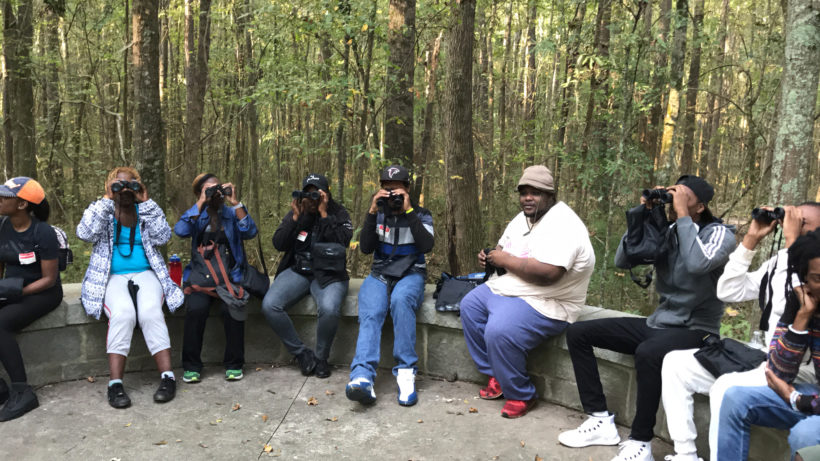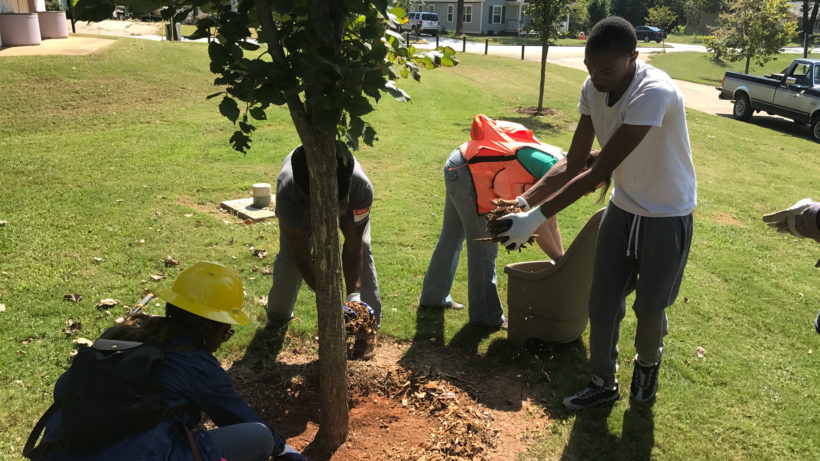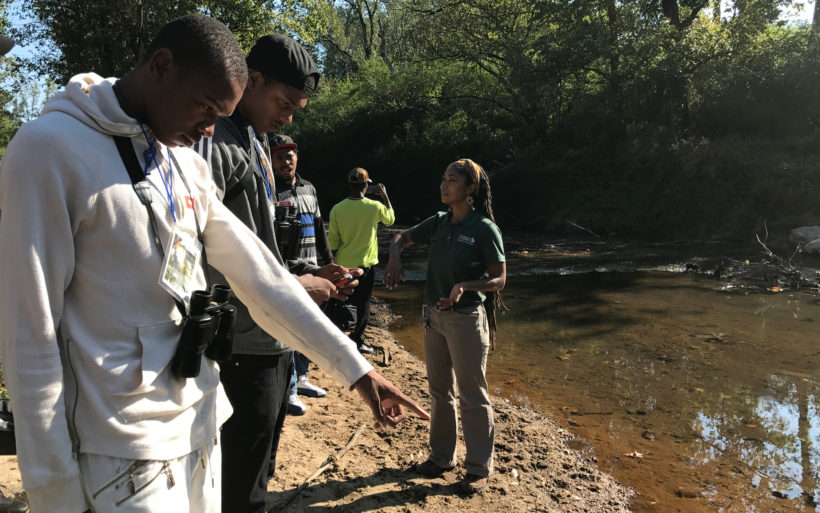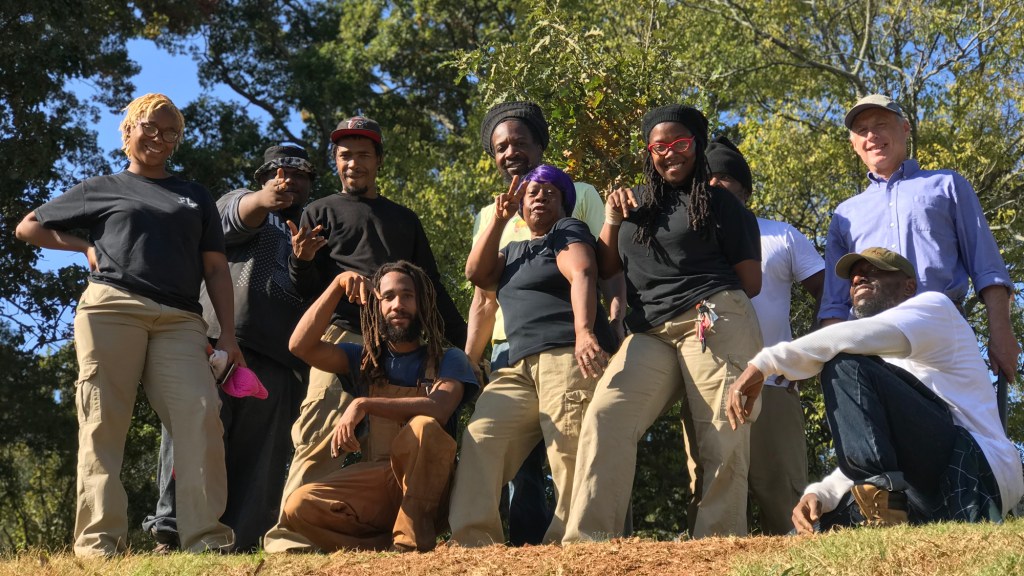“Don’t call us under-served; call us high-potential.”
I’m sitting in a circle at the Riverside Community Center with residents of northeast DC where Marvin Gaye Park tickles against the Anacostia River. Once known as, “Needle Park,” due to the high levels of discarded drug paraphernalia, Washington Parks and People have worked with community members to transform the space into an organic garden, meeting and training center. Outside the window, people sit on benches in the sunshine and small groups stride through shaded paths.
“Remember, we are the ones who never left to chase job opportunities when times got hard and we don’t want this area to turn into high-priced apartment buildings like many other places in this city.”
Stories abound of well-meaning conservation groups creating unintentional confusion in city neighborhoods with lower average household incomes and limited public services. Some stories blame parks and greenspaces for driving up housing prices and attracting new developments that disrupt the social fabric. Others cite concerns that municipal planning focused on nature ignores chronic problems such as street flooding during storms that are not obvious on days that are good for field visits.
But, does it have to be this way? As one resident reminded us, the common view of “helping under-represented communities” can cloud an understanding of what is really happening and resilient human resources that may exist. How can international conservation groups like The Nature Conservancy engage authentically in such a highly localized, nuanced space?

Maybe social science can help. The Nature Conservancy in Atlanta, part of a growing urban network including DC where I joined the conversation in Riverside, decided to give it a try. The results have been published in a recent paper in Conservation Letters.
“We were looking for the data to reveal benefits to both people and nature. From our spatial analysis, we knew we could use nature to improve stormwater runoff into creeks and rivers all over the 14-county Atlanta metro area,” recalls Myriam Dormer, director of The Conservancy’s urban program in Atlanta. “Then we used the socioeconomic analysis to better understand perspectives and opportunities for authentic engagements. It helped us think broadly about the region and then refine our scope to where we could have significant impact.”
The results were illuminating. In came as no surprise that Atlanta’s leadership reasoned every human would like to feel secure and enjoy pleasant outdoor spaces, clean water, food, and infrastructure. Yet, preferences for this experience will differ widely for individuals within a given community, even among people with similar demographics. For example, urban trees can add beauty to a space and stability to a creek bank. To some people they also pose physical hazards, particularly during storms, and care and maintenance can be a significant financial burden.
Myriam and her team decided to dig a little deeper into how The Conservancy might contribute. They surveyed people in four regions of Atlanta dominated by different trends, such as affluence, households with young children, elders, professionals, as well as homes that were owned, rented and government subsidized. They settled on the southern part of the metro region, specifically the neighborhood of Thomasville Heights as the highest opportunity.

“It was a different decision than if we had looked at just reforestation opportunities alone,” reflects Myriam, “using multiple criteria to map different options, we saw the chance to also provide more opportunity to people with lower incomes and education levels who love their community and outdoors but don’t have experience in tree stewardship.”
Until now.
Working with a local community based organization, Habesha, Inc., the team designed a program to train and hire residents to plant trees and steward local forested area. The training was open to anyone interested. The result? An intergenerational team, including a grandmother. “She was retired and spent much of her time taking care of her grandchildren. She felt like she had lost her ability to contribute to her community,” says Myriam, “Now she is working as a Green Ambassador.”
The co-created curriculum, based in tree planting, stewardship and greenspace management, also included lessons in socio-emotional intelligence, urban agriculture and vegan cooking. Light exercises in preparation for tree planting revealed the opportunity to integrate physical fitness with the maintaining trees and enjoying local green spaces. Subsequent paid internships, training and employment opportunities help create paths for long term career development.

In addition to this nascent program, our research also examined the 20 years of the Roots & Routes initiative in the City of Chicago’s Burnham Wildlife Corridor. The Field Museum and Chicago Park District have been working to co-create opportunities with residents of the neighboring Bronzeville, Pilsen, Little Village, and Chinatown using approaches from participatory action research and paid Green Ambassador internships to locally commissioned art exhibits celebrating different cultural relationships with the park.

We found in both cases that this kind of authentic engagement takes time. And this time requires the program leadership to be genuinely flexible about both setting aside staff time and other resources for a long-term engagement. Conservation organizations also must be willing to let go of any pre-conceived notion of what urban conservation “should be” and consider a whole new approach or purpose for a co-created effort.
Back in DC, as we close the meeting at the Riverside Center, the coordinator of the organic garden offers me the ceramic bowl with five remaining cherry tomatoes from our snack. She looks at the glowing red orbs and sighs, “Do you know how hard it is to get a tomato to look like that without chemicals?” I don’t and ask for the secret, “Marigolds…and making a lot of salsa with the imperfect ones.”
I accept her offering and look back out into the park where a woman is packing a toddler into the backseat of a car, reflecting on the different ways people engage with nature and conservation can interact with urban communities. I’m brought quickly back to the present by a single cherry tomato; the taste is an explosion of urban sunshine.




I am inspired by TNC’s efforts in this direction: I see great hope and opportunity both for the small communities and for the environment.
Brilliant and well-thought-out effort, TNC!!
You are rapidly becoming my favorite conservation organization!